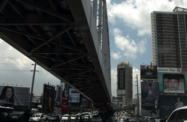The Philippines’ aviation sector is soon to undergo one of the most dramatic overhauls in its history, with a new open skies policy about to be implemented, granting foreign carriers access to provincial airports across the country. The government has said this measure will bolster tourism. However some critics believe liberalising the industry will do little to increase visitor numbers unless Philippine airlines are given reciprocal landing rights overseas.
President Benigno Aquino III first flagged what he called a “pocket open skies” policy late in 2010, announcing his intention to issue an executive order that would let foreign airlines to fly into an extended number of airports from overseas destinations, with the focus being on secondary gateways such as Cebu, Zamboanga, Laoag and Davao.
According to President Aquino, the opening up of the Philippines’ skies will be carried out in a way that will also protect the interests of existing local airlines, which would benefit from the increased flow of passengers from abroad.
“Once implemented, we expect more international airlines to enter the market,” he said on January 6. “Aside from opening our doors to more visitors that will strengthen our tourism, this will also allow us to enjoy a free market for products to further boost our economy. This, of course, will result in thousands of additional jobs, which in turn will provide decent living to many Filipino families.”
The executive order was expected to be issued at the beginning of January, but it was pushed back after the president requested modifications to the original text, a move officials said was aimed at strengthening the country’s position in negotiating the terms of an open skies deal. Though deferred, the executive order is due to be released in late January or early February.
Not everyone is convinced that the open skies policy will make much of a difference, at least not until a good deal of ground work is completed. Juan Miguel Arroyo, a member of parliament, has said that Philippine carriers must be extended the same rights as overseas airlines, and that the terms and conditions of any open skies agreements must be clearly set out to protect domestic interests.
“If we are to allow foreign airlines to have direct access to our airports, then they should also allow our airlines to have direct access to their airports, too,” Arroyo said on January 9. “There should be a reciprocity clause. The open skies policy should not be one-way traffic, otherwise instead of creating the new jobs this administration claims this executive order would generate, it would kill the local airline industry, which would result in massive lay-offs.”
However, the issue of reciprocity is a thorny one, given that both the EU and the US have put the Philippines on their blacklist of aviation service providers, restricting local carriers from flying to destinations in either of the lucrative markets. The listings also prevent US or EU airlines from flying into the Philippines, severely restricting flight options for potential tourists.
Manila has moved to get its aviation sector off the blacklist and back into the blue skies, with 87 of the 89 concerns raised by the International Civil Aviation Organization (ICAO) having been addressed, according to Ramon Guttierez, the director-general of the Civil Aviation Authority (CAA). Speaking to local media on January 3, Guttierez said he was hopeful both the ICAO and the Federal Aviation Authority (FAA) of the US would be in favour of removing the Philippines from the blacklist when they reviewed the additional improvements made in the sector later this year.
Though the CAA is confident it can make the necessary improvements in the physical infrastructure and the regulatory regime sought by international bodies, complying with the rules and meeting the standards will not necessarily guarantee that foreign carriers will immediately extend services to the Philippines. Having been sidelined since 2007, when the FAA’s blacklisting came into effect, the Philippines has fallen behind some of its neighbours in the region in terms of its standing as both a tourism destination and an air transit centre.
In 2010 some 3.4m foreign tourists passed through passport control in the Philippines, a far cry from the more than 24m that visited Malaysia last year and less than a quarter of the 15.8m arrivals recorded by crisis-hit Thailand. The Philippines will need to provide the complete package for tourism – including well-funded advertising campaigns, sound infrastructure and assured safety – before the local aviation industry will benefit from the opening of the country’s skies.

